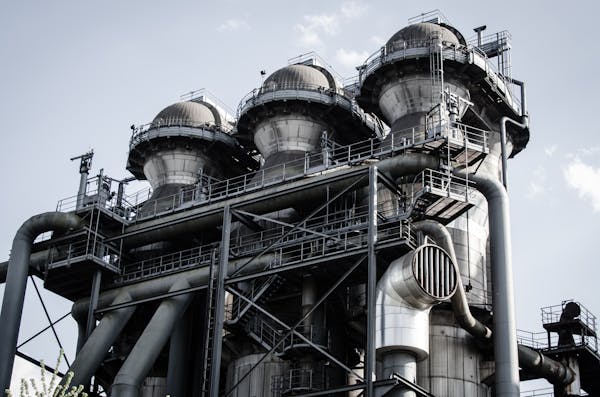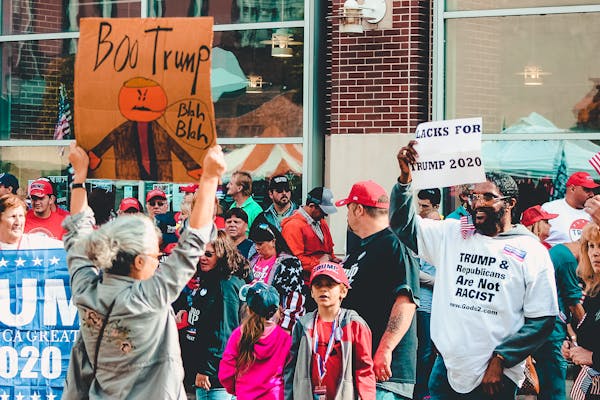When Mark Carney took the stage earlier this week, people could tell something different was happening. It wasn’t just another politician giving another speech. It wasn’t the usual promises people had grown used to hearing. This time, the words carried real weight. You could almost hear the hope building in the room.
Carney’s message was straightforward but powerful: Canada needs to protect its own steel industry. And not just with words — with action. He laid out a vision he called the “Made-in-Canada” strategy, and for the thousands of Canadians whose livelihoods depend on steel, it felt like someone was finally listening.
Why Steel Matters So Much
Steel isn’t just another product. It’s the backbone of Canada’s economy in a lot of ways. Without steel, you don’t have bridges. You don’t have cars. You don’t have the skyscrapers that make up our cities. For decades, the steel industry has provided good jobs, especially in places like Hamilton, Sault Ste. Marie, and Regina.
But it’s been a rough road lately. Global competition, mostly from countries that don’t play fair, has made things hard. The U.S. has slapped tariffs on Canadian steel before, claiming “national security” reasons that many Canadians find laughable. Meanwhile, cheap steel from places like China has flooded the global market, pushing prices down and putting Canadian workers at risk.
For a lot of communities, steel is life. It’s the difference between a thriving town and a ghost town. When a mill shuts down, it’s not just the workers who lose their jobs. It’s the restaurants, the shops, the schools — the whole town feels the hit.
Carney gets that. That’s why he’s making steel such a big part of his plan.
What the ‘Made-in-Canada’ Strategy Means
The idea behind Carney’s plan is simple: Make more here. Buy more here. Protect what we build.
It’s about encouraging Canadian companies, and even governments, to buy Canadian steel whenever possible. It’s about setting standards that make sure Canadian workers aren’t undercut by foreign competitors who don’t follow the same rules.
Carney talked about a few big moves:
- Government Procurement: Making sure that when the government builds things — highways, bridges, public buildings — it uses Canadian steel first.
- Fair Trade Rules: Cracking down on steel dumping by other countries. If they don’t play fair, Canada won’t let them hurt Canadian businesses.
- Investment in Innovation: Supporting Canadian steel companies so they can stay ahead with cleaner, more efficient technology.
- Worker Support: Making sure steelworkers have the skills and training they need for the jobs of today and tomorrow.
It sounds good on paper, but Carney made it clear — this isn’t just talk. It’s a real plan, with real steps. And he says if he’s given the chance to lead, he’ll make it happen.
How Workers Are Feeling
Talk to steelworkers in Canada these days, and you’ll hear a lot of the same things. Pride in their work. Frustration with unfair competition. Worry about the future.
When Carney spoke about the dignity of work — about how building things with your own hands matters — it hit home for a lot of people.
“We’re not looking for handouts,” said one worker in Hamilton after Carney’s speech. “We’re just looking for a fair shot.”
Another worker added, “We can compete with anybody if the playing field is level. But when other countries cheat, and we get punished, it’s hard to stay optimistic.”
Carney’s words gave them a bit of that optimism back.
The U.S. Challenge
Relations with the U.S. have always been complicated when it comes to trade. They’re our biggest trading partner, but sometimes they’re also our biggest headache.
The tariffs the U.S. imposed on Canadian steel a few years ago hurt — badly. Mills slowed down. Workers were laid off. Communities suffered. Even when the tariffs were lifted, the damage took time to heal.
Carney says Canada can’t just trust that things will be fine. We have to be ready to stand up for ourselves.
He’s proposing stronger trade enforcement and tougher negotiations with the U.S. when needed. “We have to protect Canadian jobs, Canadian workers, and Canadian industries,” he said. “No one else is going to do it for us.”
It’s a message that a lot of Canadians are ready to hear.
Cleaner, Greener Steel
Another big part of Carney’s plan is making Canadian steel cleaner and more sustainable. He talked about helping companies invest in new technologies that reduce emissions while keeping production strong.
It’s not just about protecting jobs today. It’s about making sure the steel industry has a future in a world where climate change is a growing concern.
Canada already has some of the cleanest steel production methods in the world. Carney wants to build on that advantage, helping Canadian steel become the go-to choice for buyers who care about the environment.
“Canadian steel can lead the world — not just in quality, but in responsibility,” he said.
Politics at Play
Of course, there’s always politics. Some critics say Carney’s plan is too ambitious. Others say it’s not ambitious enough.
Some worry about the cost. Others worry about the risk of angering the U.S. or other trading partners.
But Carney’s betting that Canadians are ready for leaders who aren’t afraid to take a stand. Leaders who are willing to fight for Canadian industries and Canadian workers.
And based on the reaction he’s getting in steel towns, he might just be right.
Real People, Real Stories
At Carney’s town hall events, you hear real stories that remind you why this matters.
Like the father in Sault Ste. Marie who worked at the same mill his dad did, and hopes his son will too.
Or the small business owner in Hamilton who supplies parts to the mills and says he’s hanging on by a thread.
Or the young apprentice welder who just started her career and wants to know there will still be jobs when she finishes her training.
These aren’t just numbers on a spreadsheet. These are real lives. Real futures.
Carney’s promise to protect Canadian steel is about protecting them.
What’s Next?
Carney says the work starts right away. He’s calling for immediate meetings with industry leaders, labor unions, and local governments to hammer out the details of the Made-in-Canada strategy.
He’s also pushing for stronger laws against unfair trade practices, and new incentives for companies that invest in Canadian workers and Canadian materials.
It won’t be easy. Nothing worth doing ever is.
But for the thousands of Canadians who build the steel that builds everything else, it’s a fight worth having.
A Bigger Picture
Carney’s speech wasn’t just about steel. It was about something bigger.
It was about the idea that Canada should believe in itself again. That we shouldn’t just be a branch plant for other countries’ industries. That we can build our own future — and we should.
Steel is just the start.
If Canada can protect and grow its steel industry, it can protect and grow a lot more too. Manufacturing. Energy. Technology. Innovation. It’s all connected.
Carney’s message was clear: Believe in Canadian workers. Invest in Canadian industries. Build a Canadian future.
Final Thoughts
At the end of his speech, Carney told a story about visiting a steel mill when he was younger. He remembered the heat, the noise, the unbelievable sight of molten steel pouring out like lava.
He remembered the pride on the workers’ faces.
That pride is still there today. It just needs leaders willing to fight for it.
Mark Carney says he’s ready for that fight.
And judging by the way the crowd cheered, a lot of Canadians are ready to stand with him.



